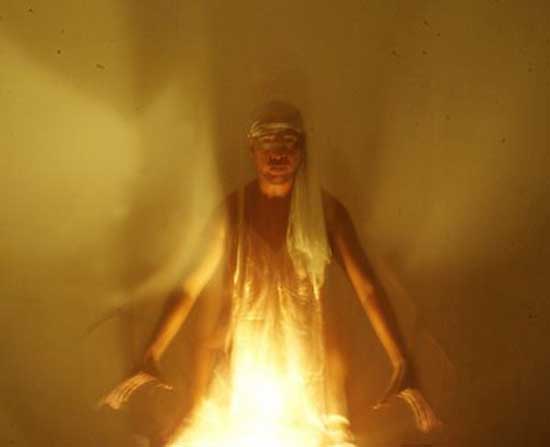 Technology
Technology  Technology
Technology  Humans
Humans 10 Everyday Human Behaviors That Are Actually Survival Instincts
 Animals
Animals 10 Animals That Humiliated and Harmed Historical Leaders
 History
History 10 Most Influential Protests in Modern History
 Creepy
Creepy 10 More Representations of Death from Myth, Legend, and Folktale
 Technology
Technology 10 Scientific Breakthroughs of 2025 That’ll Change Everything
 Our World
Our World 10 Ways Icelandic Culture Makes Other Countries Look Boring
 Misconceptions
Misconceptions 10 Common Misconceptions About the Victorian Era
 Mysteries
Mysteries 10 Strange Unexplained Mysteries of 2025
 Miscellaneous
Miscellaneous 10 of History’s Most Bell-Ringing Finishing Moves
 Technology
Technology Top 10 Everyday Tech Buzzwords That Hide a Darker Past
 Humans
Humans 10 Everyday Human Behaviors That Are Actually Survival Instincts
 Animals
Animals 10 Animals That Humiliated and Harmed Historical Leaders
Who's Behind Listverse?

Jamie Frater
Head Editor
Jamie founded Listverse due to an insatiable desire to share fascinating, obscure, and bizarre facts. He has been a guest speaker on numerous national radio and television stations and is a five time published author.
More About Us History
History 10 Most Influential Protests in Modern History
 Creepy
Creepy 10 More Representations of Death from Myth, Legend, and Folktale
 Technology
Technology 10 Scientific Breakthroughs of 2025 That’ll Change Everything
 Our World
Our World 10 Ways Icelandic Culture Makes Other Countries Look Boring
 Misconceptions
Misconceptions 10 Common Misconceptions About the Victorian Era
 Mysteries
Mysteries 10 Strange Unexplained Mysteries of 2025
 Miscellaneous
Miscellaneous 10 of History’s Most Bell-Ringing Finishing Moves
10 Monsters That Inspire Dread
Mysterious creatures of the night – the stuff of nightmares! This list takes a look at ten monsters from history, myth and folklore that ought to scare the pants off us. I have tried to restrict the list to creatures that have not been presented on Listverse before, to keep things interesting. Be sure to tell us your own favorite (or rather, despised) monsters in the comments.
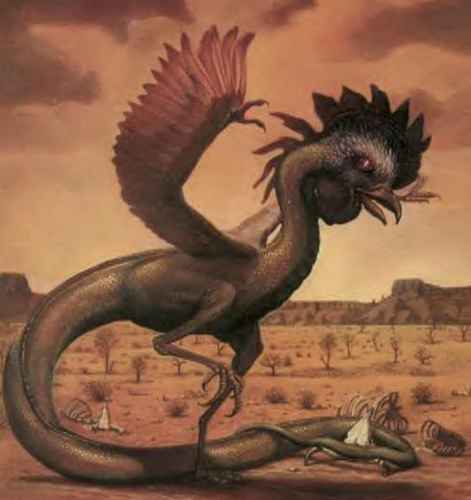
The Cockatrice can cause death with a single glance. Reports indicate that anything catching sight of the lethal bird’s eyes is turned instantly to stone. Just as deadly is their poisonous saliva, which can fell even an elephant. Also known as a Basilisk, a Cockatrice has the head and feet of a cockerel and the tail of a serpent. The Cockatrice is believed to be the product of a seven-year-old cockerel’s egg, laid during a full moon, and then hatched for nine years by a serpent or toad. There are a few ways to protect oneself from a Cockatrice. One is to carry something reflective – like a mirror – and turn the creature’s gaze back on it. Another is to keep either a weasel or a cockerel nearby. The weasel is said to be the mortal enemy of the Cockatrice, While the crowing of the cockerel is even more effective as it causes the Cockatrice to have fatal fits and ultimately thrash itself to death.
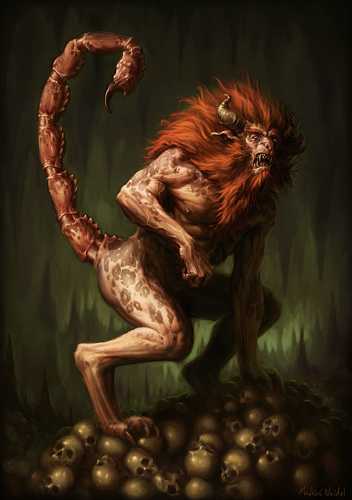
The manticore is a legendary creature similar to the Egyptian sphinx. It has the body of a red lion, a human head with three rows of sharp teeth (like a shark), and a trumpet-like voice. Other aspects of the creature vary from story to story. It may be horned, winged or both. The tail is that of either a dragon or a scorpion, and it may shoot poisonous spines to either paralyze or kill its victims. It devours its prey whole. It leaves no clothes, bones or possessions of the prey behind. The creature’s feet may be those of a dragon, but are most often described as the paws of a lion. Its size ranges from the size of a lion to the size of a horse. It is also mistaken as a bearded man when seen from a distance – a deception which makes it easy to fall victim to the creature.
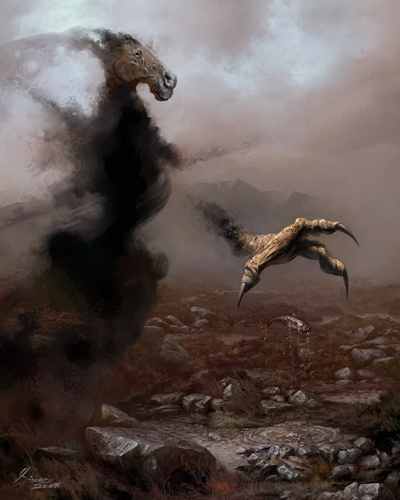
The kelpie is a supernatural water horse from Celtic folklore, that is believed to haunt the rivers and lochs of Scotland and Ireland. The horse’s appearance is strong, powerful and breathtaking. Its hide was supposed to be black (though in some stories it was white), and it will appear to be a lost pony, but can be identified by its constantly dripping mane. Its skin is like that of a seal, smooth, but is as cold as death when touched. Water horses are known to transform into beautiful women to lure men into their traps. The water horse is a common form of the kelpie, said to lure humans, especially children, into the water to drown and eat them. It performs this act by encouraging children to ride on its back. Once its victims fall into its trap, the kelpie’s skin becomes adhesive and it bears them into the river, dragging them to the bottom of the water and devouring them—except the heart or liver.
Not only is the soucouyant scary – it is probably the most bizarre entry here. The soucouyant in Dominica, Trinidadian and Guadeloupean folklore, is a kind of vampire. The Soucouyant lives by day as an old woman at the end of the village. By night, however, she strips off her wrinkled skin, puts it in a mortar, and flies in the shape of a fireball through the darkness, looking for a victim. Still in the shape of a fireball, the soucouyant enters the home of her victim through the keyhole, or any crack or crevice. Soucouyants suck the blood of people from their arms, legs and other soft parts, while they sleep. If the soucouyant draws out too much blood from her victim, it is believed that the victim will die and become a soucouyant herself, or else perish entirely, leaving her killer to assume her skin. The soucouyant practices witchcraft, voodoo and black magic. Soucouyants trade the blood of their victims for evil powers with Bazil, the demon who resides in the silk cotton tree.

Umibōzu is a spirit in Japanese folklore. The Umibōzu is said to live in the ocean and capsize the ship of anyone who dares speak to it. This spirit’s name, which combines the character for “sea” with the character of “Buddhist monk,” is possibly related to the fact that the Umibōzu is said to have a large, round head, resembling the shaven heads of Buddhist monks. Alternatively, they are enormous Yōkai (spectres) that appear to shipwreck victims and fishermen. They are believed to be drowned priests, exhibit the shaven head and typically appears to be praying. It is usually reported as having a grey, cloud-like torso and serpentine limbs. As you can see from the image above, this is not a creature you want to bump into in the middle of the night.
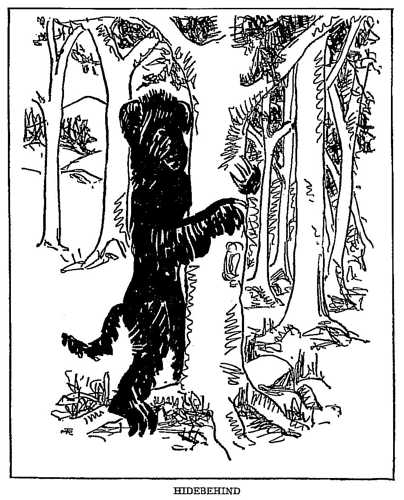
A hidebehind is a nocturnal fearsome critter from American folklore that preys upon humans that wander the woods, and was credited for the disappearances of early colonial loggers when they failed to return to camp. As its name suggests, the hidebehind is noted for its ability to conceal itself. When an observer attempts to look directly at it, the creature hides again behind an object or the observer, and therefore can’t be directly seen; a feat it accomplishes by sucking in its stomach to a point where it is so slender that it can easily cover itself behind the trunk of any tree. The hidebehind uses this ability to stalk human prey without being observed, and to attack without warning. Their victims, including lumberjacks who frequent the forests, are dragged back to the creature’s lair to be devoured. The creature subsists chiefly upon the intestines of its victim. Tasty.
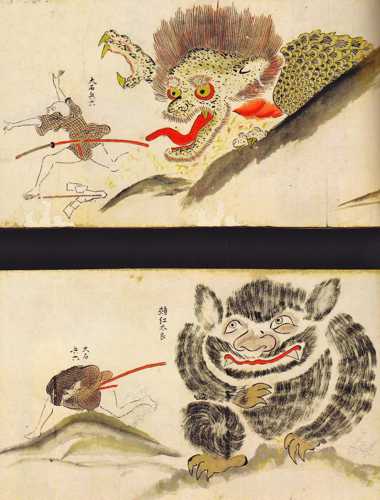
Cats are meant to be furry and cute – but not when it is five feet high and shoots fireballs! A bakeneko (“monster-cat”) is, in Japanese folklore, a cat with supernatural abilities akin to those of the fox or raccoon dog. A cat may become a bakeneko in a number of ways: it may reach a certain age, be kept for a certain number of years, grow to a certain size, or be allowed to keep a long tail. A bakeneko is a cat that gains paranormal powers after certain circumstances. They also have the ability to eat (bigger or smaller) anything in its way, no matter what it is. Poison is its main food. A bakeneko will haunt any household it is kept in, creating ghostly fireballs, menacing sleepers, walking on its hind legs, changing its shape into that of a human, and even devouring its own mistress in order to shapeshift and take her place. When it is finally killed, its body may be as much as five feet in length. It also poses a danger if allowed into a room with a fresh corpse; a cat is believed to be capable of reanimating a body by jumping over it.
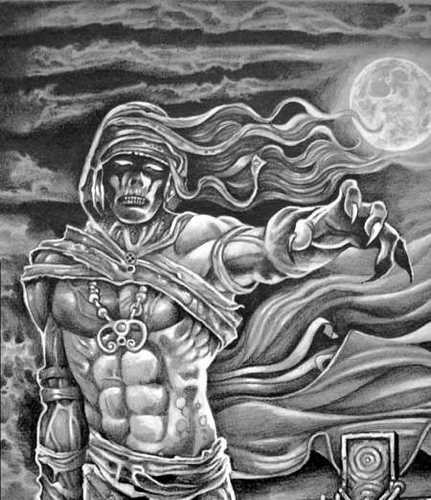
A draugr is an undead creature from Norse mythology. Draugar were believed to live in the graves of dead Vikings, being the body of the dead. As the graves of important men often contained a good amount of wealth, the draugr jealously guards his treasures, even after death. Draugar possess superhuman strength, can increase their size at will, and carry the unmistakable stench of decay. The draugr’s ability to increase its size also increased its weight, and the body of the draugr was described as being extremely heavy. Thorolf of Eyrbyggja Saga was “uncorrupted, and with an ugly look about him… swollen to the size of an ox,” and his body was so heavy that it could not be raised without levers. In folklore the draugar slay their victims through various methods including crushing them with their enlarged forms, devouring their flesh, devouring them whole in their enlarged forms, indirectly killing them by driving them mad, and drinking their blood. Animals feeding near the grave of a draugr may be driven mad by the creature’s influence.
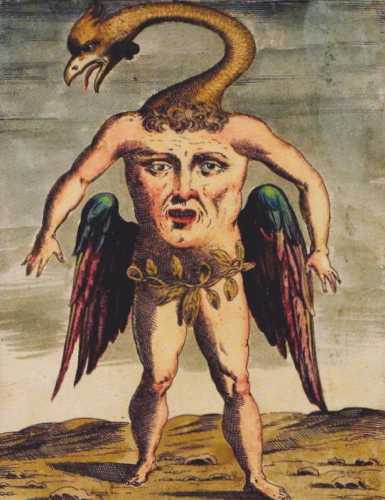
Pliny (in his Natural History, 77AD) gives us the first accounts of monstrous races in his attempt to describe the various unknown peoples of foreign lands. Some of the races he describes are hairy choromandae, which make a terrifying gnashing noise, half-beasts and half men created by the gods to terrify men for their amusement, and perhaps most horrifyingly a race of creatures who feed exclusively on the milk of dog-headed men (cynocephalae). In medieval history we find men with chests in their heads, and gigantic men who roam about on one leg, but prefer to lie on their back using their giant foot to protect them from the sun (sciapods). Pictured above is a weird mix of a man with a head in his chest, mixed with a bird.
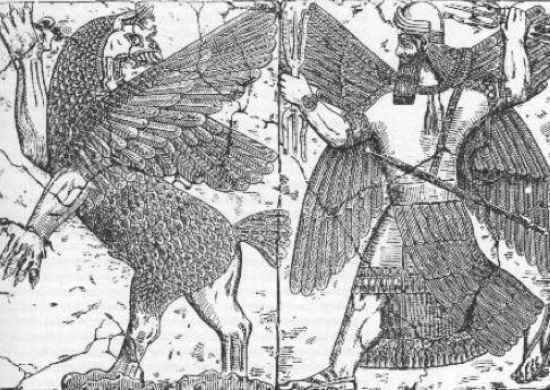
We are all familiar with dragons from various historical tales and myths, but Tiamat really takes the cake for inspiring terror. Tiamat comes to us from Babylonian mythology. She is often wrongly described as being a sea-serpent or dragon, but it is far worse than that. First, here is a description: “[Tiamat had] a tail, a thigh, “lower parts” (which shake together), a belly, an udder, ribs, a neck, a head, a skull, eyes, nostrils, a mouth, and lips. She has insides (possibly “entrails”), a heart, arteries, and blood.” She was made up of such a jumble of things that she truly was a creature of chaos. But it gets worse. Tiamat was so horrifying, so monstrous, and so dread-inspiring because, from her bizarre pseudo-human cum cryptozoological body, she gave birth to dragons, scorpion-men, merpeople (yes, that is a real word), and countless other horrifying things. The Tiamat myth says that she was eventually killed by the god Marduk, who then split her body in two forming heaven and earth.
